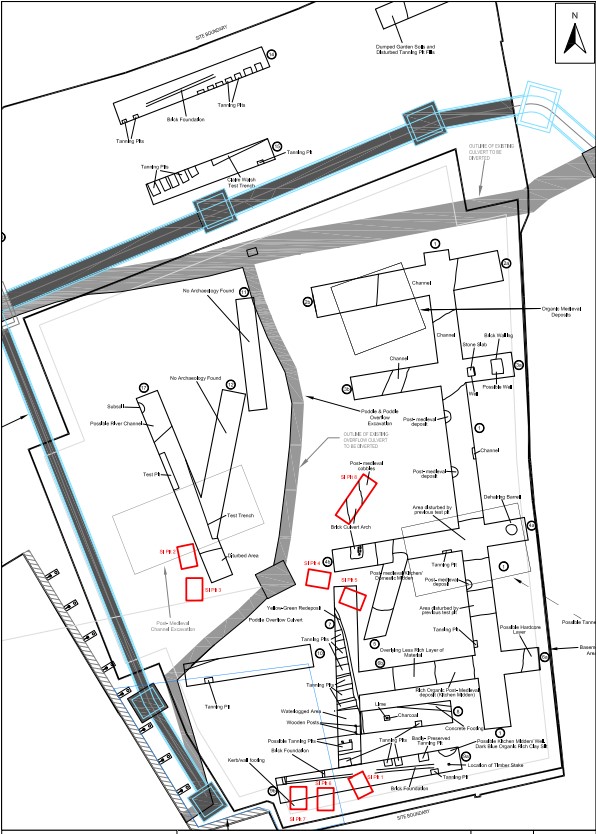2016:873 - DUBLIN: Tenters Blackpitts, Mill Street, Dublin
County: Dublin
Site name: DUBLIN: Tenters Blackpitts, Mill Street
Sites and Monuments Record No.: N/A
Licence number: 15E0555
Author: Paul Duffy, c/o IAC Archaeology Ltd.
Author/Organisation Address: Unit G1 Network Enterprise Park, Kilcoole, Co. Wicklow
Site type: Town
Period/Dating: Post Medieval (AD 1600-AD 1750)
ITM: E 714846m, N 733219m
Latitude, Longitude (decimal degrees): 53.336732, -6.275556
A programme of archaeological monitoring took place on 7 January 2016 at the Tenters Blackpitts, Dublin 8, during the excavation of trial pits within the southern portion of the site. The programme of monitoring was undertaken on behalf of BAM, in fulfillment of planning condition from Dublin City Council. It followed a previous programme of testing carried out by IAC Archaeology in 2007 (Coughlan & Kyle, 2016).
The monitoring of site investigation works uncovered evidence of possible river channel deposits in Pit 1 and Pit 2, and confirmed the overburden of demolition layer and disturbed garden soils across the southern portion of the site. A red-brick culvert, identified during the testing (Trench 4, Coughlan & Kyle, 2016) was encountered in Pit 8.
As per the testing results, the monitoring confirmed the presence of tanneries to the north and south of the site, disposed in organized alignments in some cases, as showed in Roque’s map (1756).
A potential wall footing or kerb likely associated with tanning activity was encountered in Pit 7. The feature comprised a linear arrangement of stones bonded by light grey clay. Dense fibrous material was observed mixed through the clay. The poor preservation of this material made it difficult to establish whether this material was coarse animal hair (which might suggest an association with tanning activity) or a matt of fine roots from overlying shrubs. Excavation was stopped at the surface of this feature and the pit moved elsewhere.
One further discovery of note was the presence of an area of robust cobbling in the northern end of Pit 8 at c. 0.5m below PGL. This cobbling was sealed by a thick layer of clay and was cut by a later red-brick culvert. Excavation of Pit 8 was halted at this level and moved to the south of the culvert in order to preserve the cobbling in situ.

